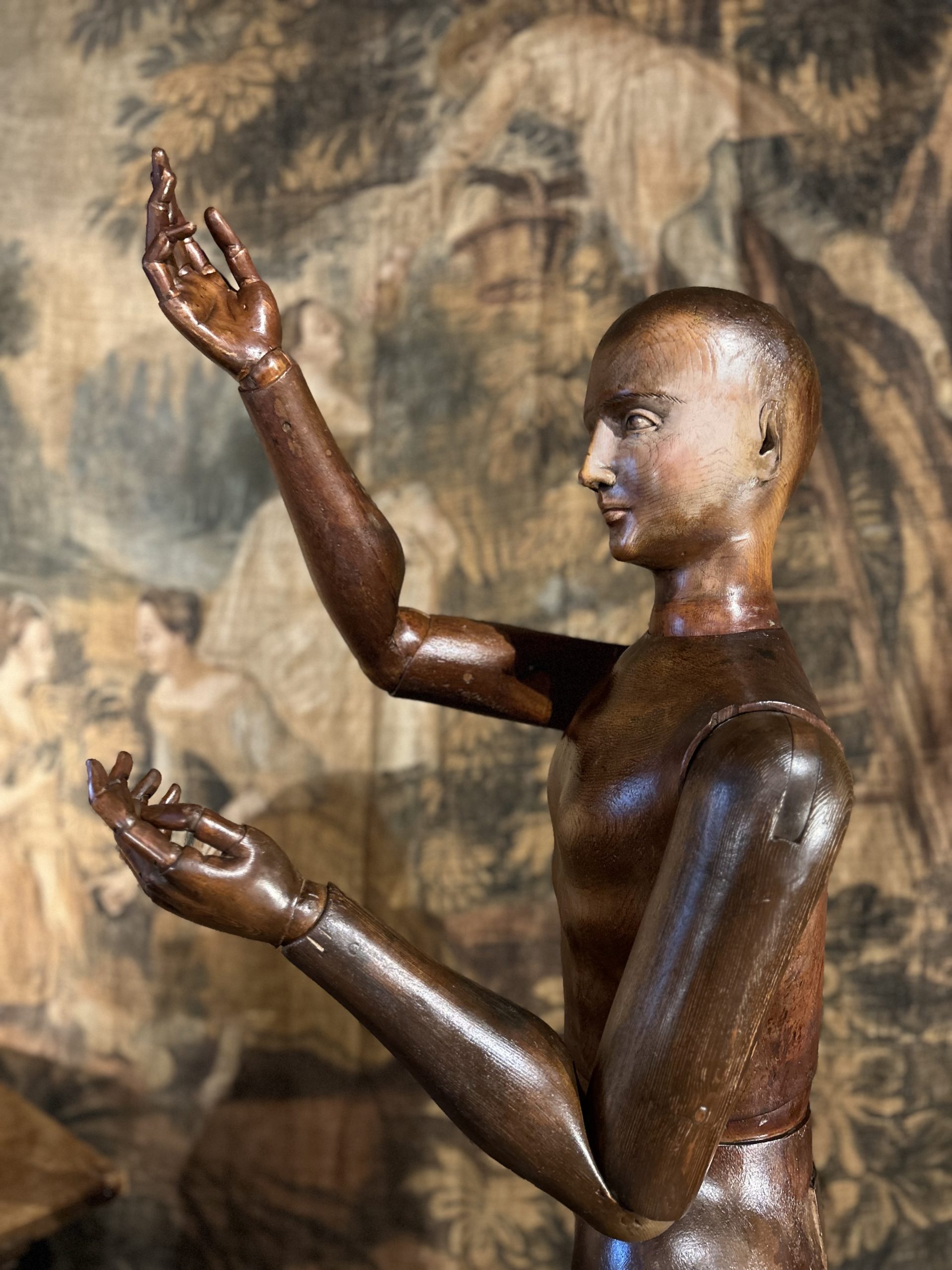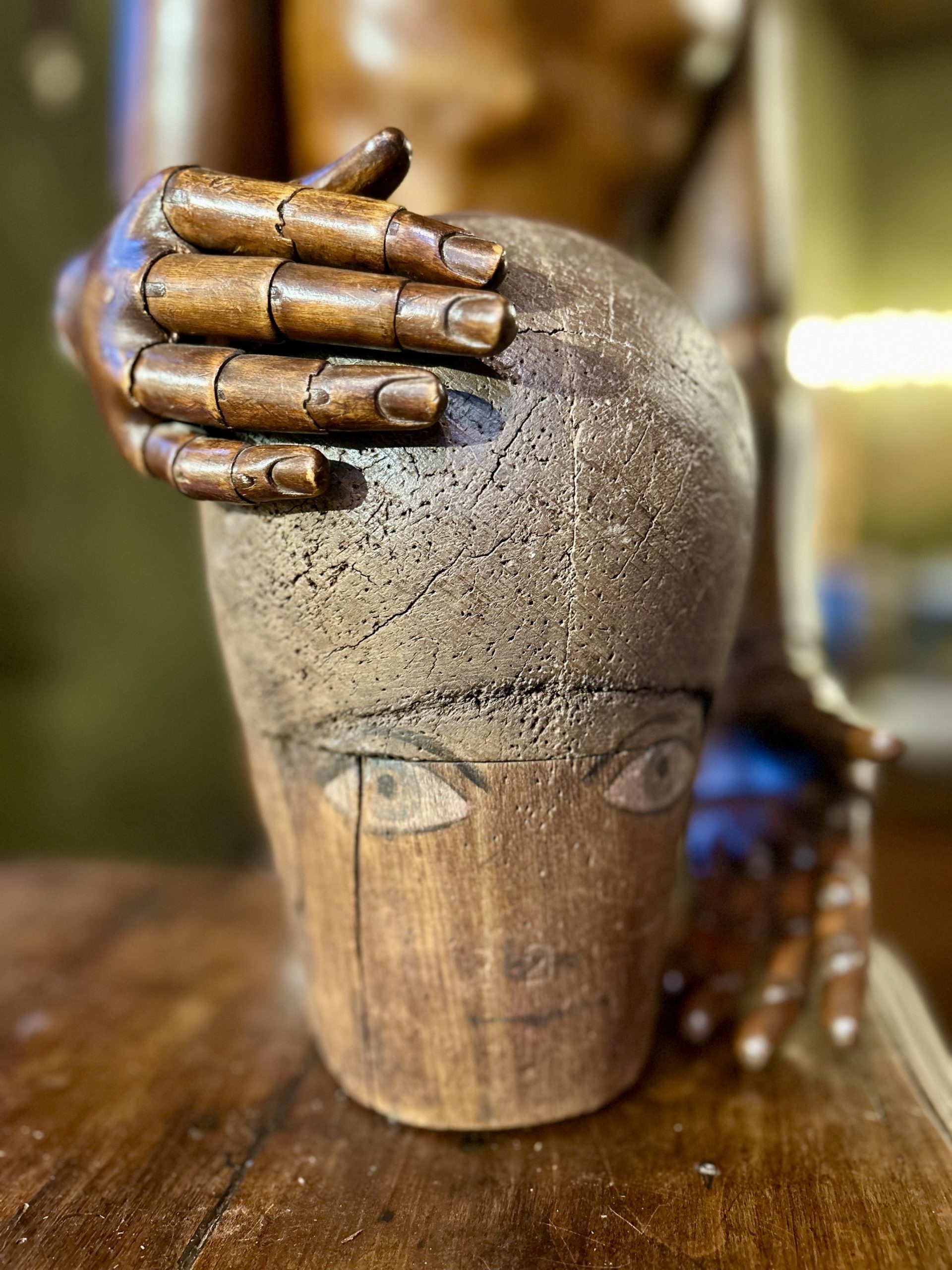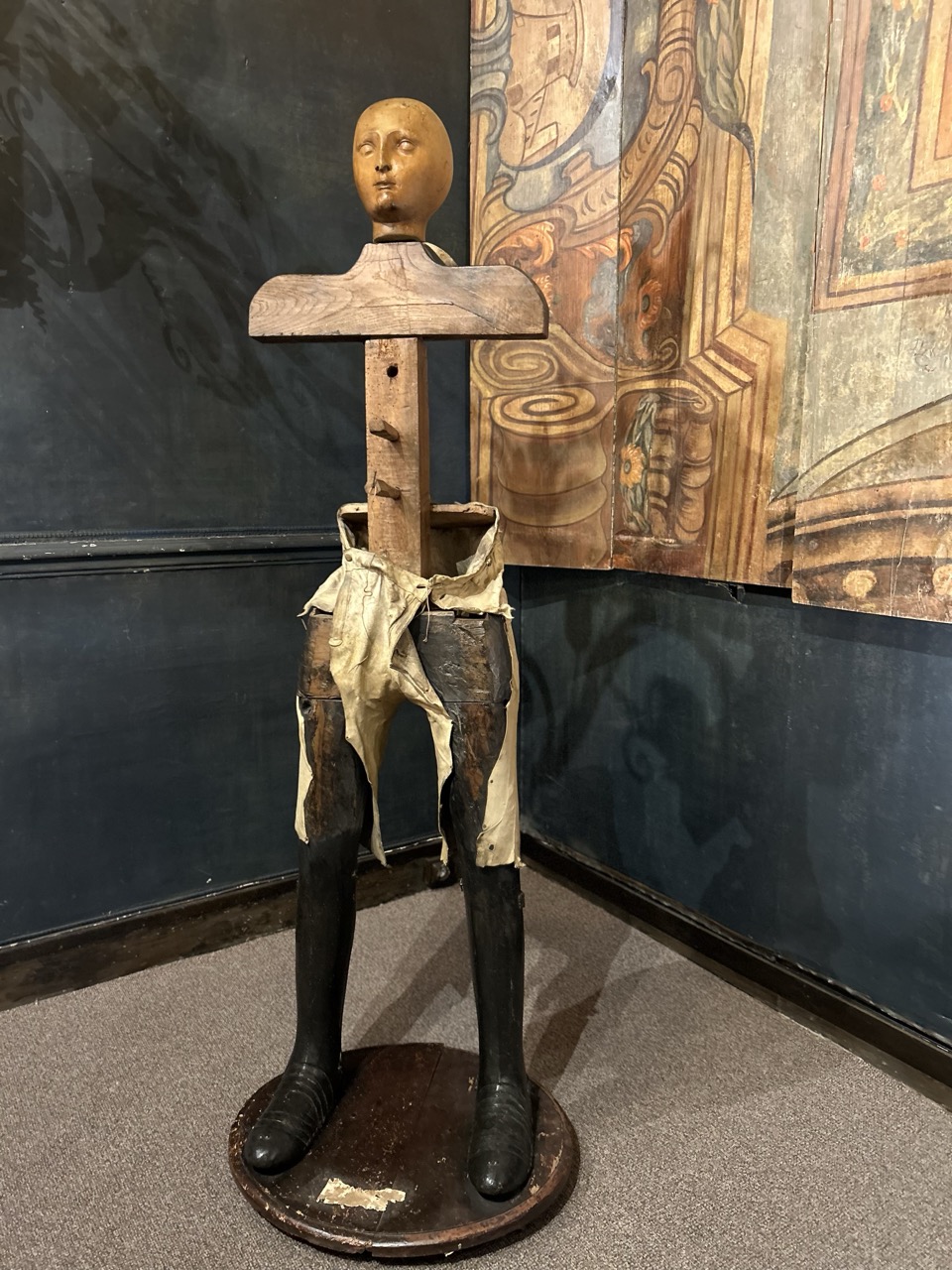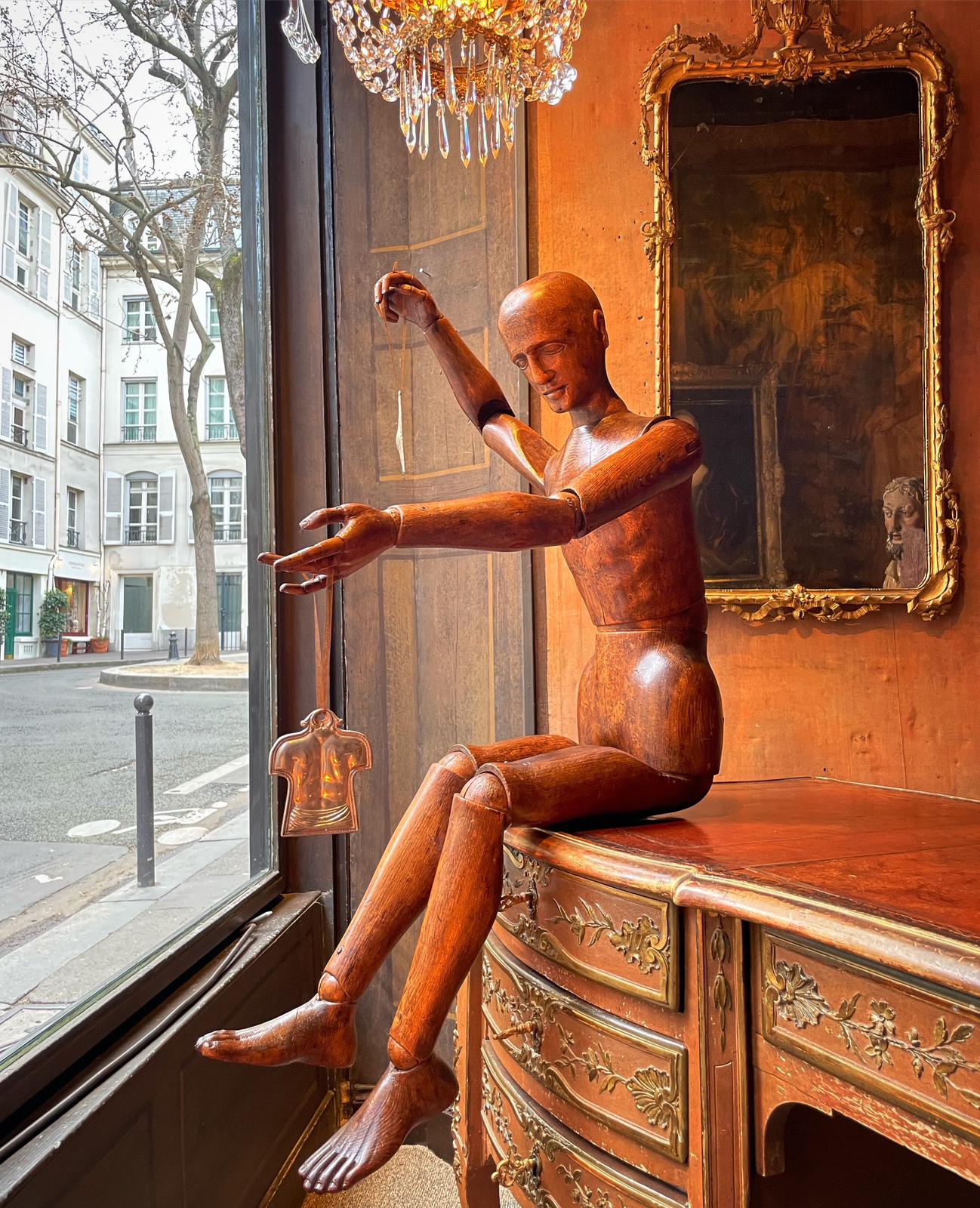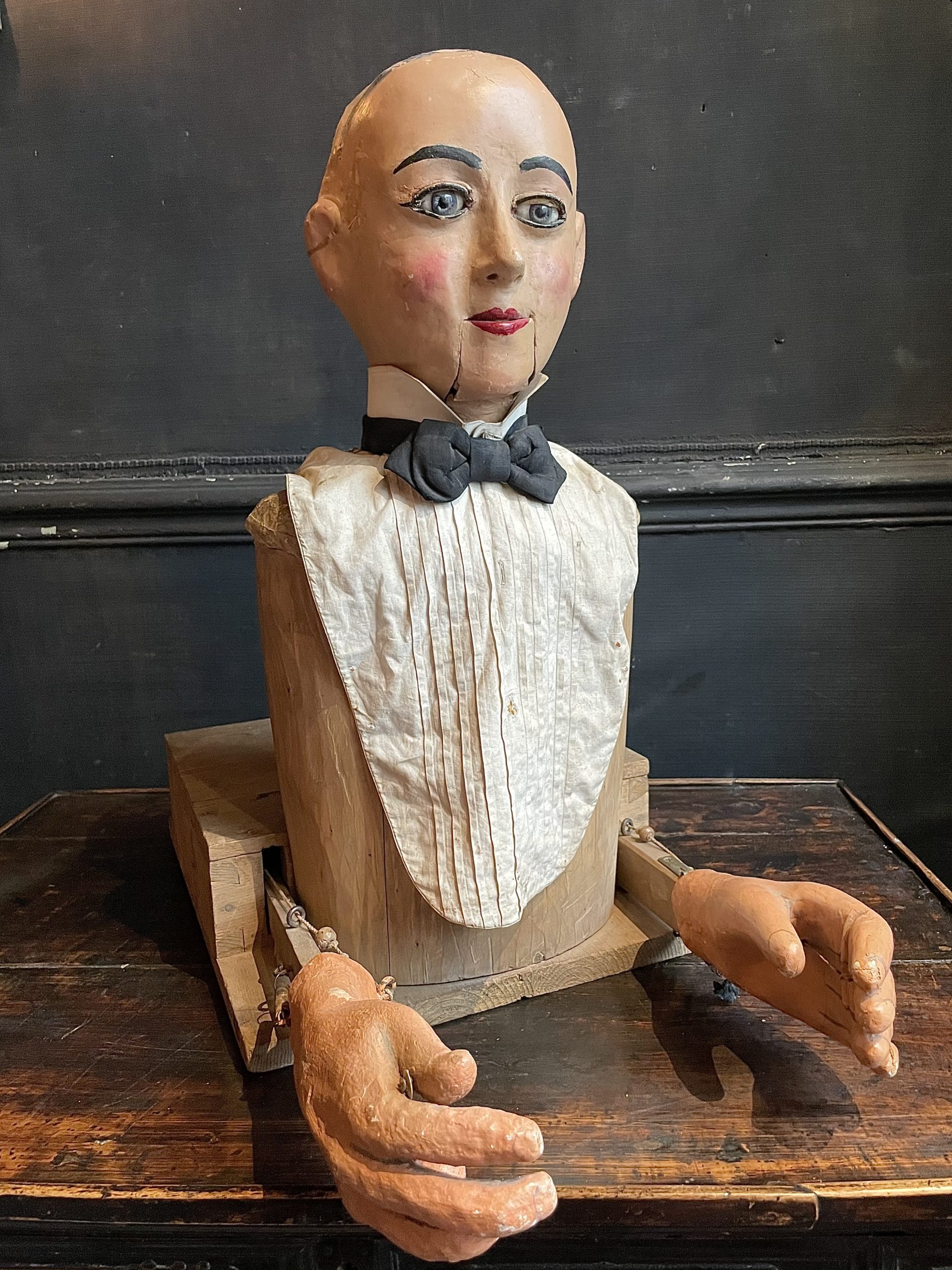Walnut artist’s mannequin, with metal joints, one of its hands has folded fingers. Stamped mark: “PATENTED FRENCH MODEL SGDG/SUP. ARTICULATED FRAME. PARIS B. DEPOSITED”.
As early as the Renaissance, mannequins were used by artists and sculptors to study perspective, arrange compositions, “rehearse” the fall of light and shadow and, above all, to paint draperies and clothing.
In the second half of the 19th century, the mannequin began to transform from tool to icon and muse. At first it appears in paintings with humor, then in a darker way, when artists like Edgar Degas play on the presence in the studio of a figure both living and lifeless; but clearly unreal. This more penetrating psychological approach reflected to some extent the then-widespread fascination with hysteria, widely known through the case studies of the patients of the “Napoleon of Neuroses,” Dr. Jean-Marie Charcot, at the Salpêtrière Hospital. , in Paris. Under hypnosis, these women left the indelible impression of being “manikinized,” manipulated by the doctor as an artist would pose a profane character.
Late 19th century
France
Height: 50cm








